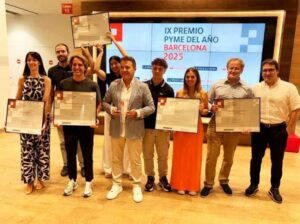In the vibrant city of Mexico City, an innovative initiative is redefining accessibility to art and human rights. It is the mural “All rights, all people”, located in the Central de Abasto, a work by the artist from Veracruz, Eva Bracamontes. This mural, commemorating the 75th anniversary of the Universal Declaration of Human Rights, has undergone an interesting adaptation: an accessible replica for visually impaired individuals.
The inclusive project has been led by the Mexican collective Cuéntame un Mural, a group of experts in 3D printing, sound design, and texturization. They have designed a version of the mural that incorporates reliefs and textures, allowing visually impaired individuals to experience the work through touch and sound. The replica’s inauguration was celebrated with a touching event where Bruno Quevedo, an 11-year-old blind boy, interacted excitedly with the work. For Bruno, and many others like him, art accessibility is essential to fully enjoy and understand its messages.
Valtier Mejía, a member of the collective and also visually impaired, described the replica as “a work of art about another work of art.” His dream is for museums around the world to incorporate inclusive replicas, allowing more people to access art. The accessible replica was shown at the Cineteca Nacional Mexico Coyoacán, with the purpose of raising awareness about the importance of inclusive access to culture.
The creation of Cuéntame un Mural was inspired by Valtier’s personal experience, who, frustrated by not being able to appreciate a mural that had impressed his friend Cecilia González, started this mission of cultural accessibility. Together, they have worked to break barriers and create a full artistic experience for visually impaired individuals.
Eva Bracamontes, the artist of the original mural, was pleased to learn that her work has inspired efforts to make art more accessible. Carmen Morales, director of the United Nations Information Center, highlighted that this project is a tangible example of the application of the principles of the Universal Declaration of Human Rights.
This inclusive replica not only promotes cultural accessibility, but also aligns with the UN Sustainable Development Goals, including inclusive education and reducing inequalities. The UN has reinforced its commitment to the inclusion of persons with disabilities through its Disability Inclusion Strategy, demonstrating that an accessible world is a world for all.
Referrer: MiMub in Spanish












